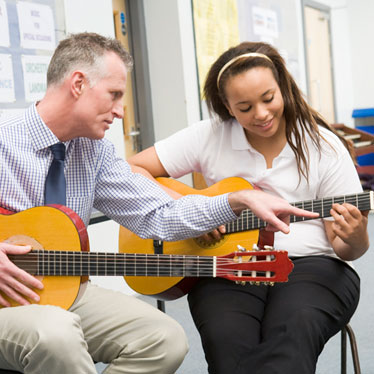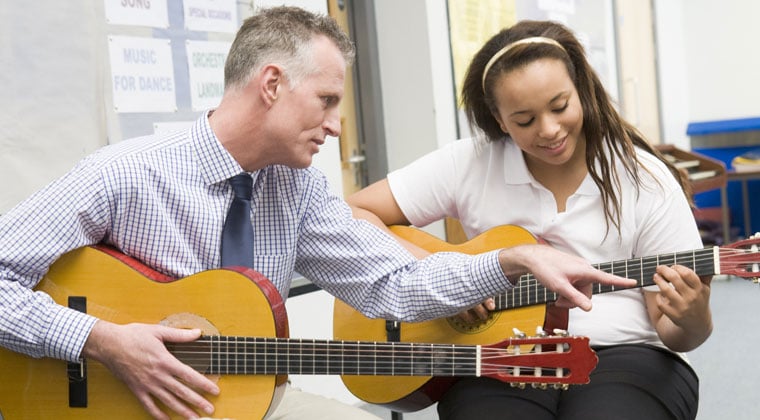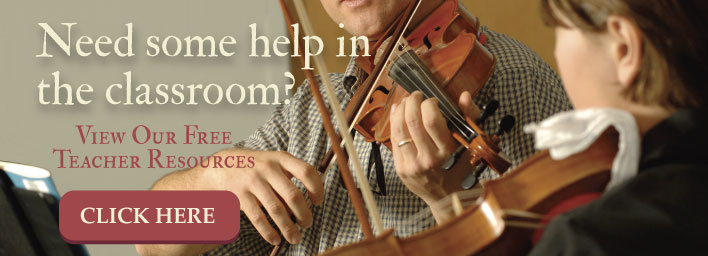
 As we continue to explore the elements of music, this article will further examine concepts related to pitch, specifically harmony, and some methods used to impart it to your students. Often when music students (or adults) hear the word harmony, they associate it with pleasing sounds, or the mutual, beneficial interaction between two people, functions, or ideas. However, when you are referring to music, the word harmony has a very distinctive meaning; and as you know, it doesn’t necessarily have to sound “harmonious.”
As we continue to explore the elements of music, this article will further examine concepts related to pitch, specifically harmony, and some methods used to impart it to your students. Often when music students (or adults) hear the word harmony, they associate it with pleasing sounds, or the mutual, beneficial interaction between two people, functions, or ideas. However, when you are referring to music, the word harmony has a very distinctive meaning; and as you know, it doesn’t necessarily have to sound “harmonious.”
Although it’s possible to have music without harmony, it is an element of music that helps develop the depth and the general tone of the piece, so it’s very important for students to grasp early.
Basic Concept and Definition
Harmony occurs in music when two or more pitches are sounded together at the same time. Explain to your students that harmony doesn’t have to sound a certain way, or that it requires a chord to create it. Harmony refers to the relationship between different pitch frequencies; and it happens whenever two or more notes are played simultaneously.
Since harmony is a very in depth topic, this is a great time to expose your students to the different ways harmony is created, and its various methods and terms. Older students will benefit from learning some of the basic principles that define major, minor, and triad chords.
Activities
Students can learn to identify how the different types of harmony utilize textures, chords, and accompaniments to develop and contribute to the overall sound and feeling of music when you employ targeted listening exercises. Plan your exercises so that you can isolate the most definite form of harmony in each piece of music you use.
Materials needed: You’ll need to have some audio examples that feature different, basic harmonies. For example, someone singing a melody while strumming chords on a guitar, various well-known classics, or bagpipe music (for drone examples). Depending on your age group, you’ll want to include examples of parallel, drone, and prominent bass line harmonies, as well as inner parts and how chords create pleasing cadence. It’s also helpful to have copies of sheet music handy to show note placement.
Objectives: Students will be able to identify various forms of harmony in music, and use specific terms to describe its purpose.
Harmony Created Using Drones
For this activity, use the music you’ve gathered that features drone notes creating harmony. As mentioned, bagpipe music is a great choice for this listening exercise, but “Sarasponda” also works well for demonstrations. It offers the advantage of either playing or singing along with both the melody and the drone harmony.
The idea is to convey, as basically as possible, the differences created with and without the use of harmony. Have the students listen, play, or sing the song without the drones, and then with them. After you’ve done this, discuss how the drones helped complete the overall sound of the song.
Chords
Another activity that will help introduce chords to your music students involves the same type of participation, but if it’s available, having a guitar or other instrument that can be strummed is helpful. For young students simply show how block and arpeggio chords sound. You may also want to demonstrate how a simple chordal accompaniment is often played by striking the bass string followed by the strummed chord. Many musicians use this technique for informal playing at home.
Explain to your students that one of the simplest methods for including harmony involves adding chords along with the melody. You may want a few students to sing or play the melody while a few others add the chords. Like similar listening exercises, discuss the progressions and the impact the chords made to the overall sound of the music.
Parallel Harmonies
Many holiday songs and folk tunes feature parallel harmony that you can use to perform this activity. Explain that unlike drones, a parallel harmony adds more depth, but isn’t as complex as an independent harmony. Again, it’s very useful to have copies of the sheet music as you demonstrate how parallel harmonies follow the melody up and down but don’t necessarily always “match” it by moving the same pitch distance.
First, play the melody by itself and then the harmony by itself, having your students listen for the differences. Then play them together and discuss how playing parallel notes simultaneously enriched the music. This same activity can be employed when teaching counterpoint harmony.
When teaching the elements of harmony, it’s not necessary to immediately delve into why certain notes complement or relate to each other based on their location on scales and according to their pitch frequency patterns. However, laying a foundation that gives students the ability to identify harmony now will make it easier to teach the concept later.

